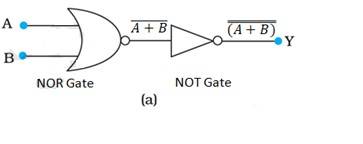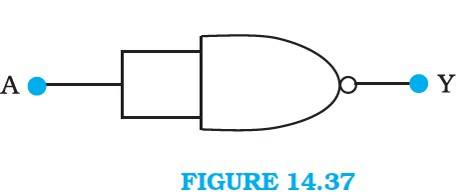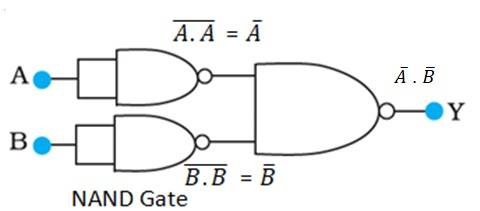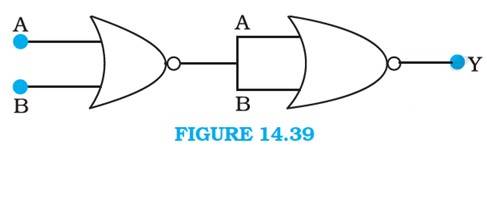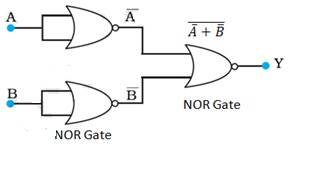
NCERT Solutions for Class 12 Physics Chapter 14 Semiconductor Electronics is available here. Semiconductor Electronics: Materials, Devices and Simple Circuits NCERT solutions are an excellent resource for students who are looking to improve their understanding of the subject and excel in their exams. The NCERT Class 12 Solutions provide comprehensive answers to all the questions, ensuring that students have a complete understanding of the topic. Semiconductor Electronics: Materials, Devices and Simple Circuits PDF is also available for download here.
Apart from metals and non-metals, there exists a range of materials known as semiconductors that play a critical role in the development of modern electronic devices. Semiconductor electronics is a branch of electronics that deals with the study of materials, devices, and circuits based on semiconductors. Semiconductors are materials that have electrical conductivity between conductors and insulators. This unique property makes them ideal for the development of electronic devices, which are essential components of modern technology. This chapter primarily focuses on n-type semiconductors, dopants, and carriers, and many questions will be related to these topics. The chapter also includes exercises aimed at determining the number of electrons and holes in the atoms of indium, silicon, and arsenic.
Semiconductor Electronics: Materials, Devices and Simple Circuits: Topics Covered
- Introduction to Semiconductor Electronics
- Classification of Metals, Conductors and Semiconductors
- Intrinsic Semiconductor
- Extrinsic Semiconductor
- p-n Junction
- Semiconductor Diode
- Application of Junction Diode as a Rectifier
Download Here: NCERT Solution for Class 12th Physics Chapter 14 Semiconductor electronics - Material, Devices and Simple Circuits PDF
- Semiconductor Electronics: Materials, Devices and Simple Circuits Solutions and FAQs
Semiconductor Electronics: Materials, Devices and Simple Circuits Solutions and FAQs
Q.14.1 In an n-type silicon, which of the following statement is true:
(a) Electrons are majority carriers and trivalent atoms are the dopants.
(b) Electrons are minority carriers and pentavalent atoms are the dopants.
(c) Holes are minority carriers and pentavalent atoms are the dopants.
(d) Holes are majority carriers and trivalent atoms are the dopants.
Ans.14.1 The correct statement is (c ).
In an n-type silicon, the electrons are the majority carrier, while the holes are the minority carriers. An n-type semiconductor is obtained when pentavalent atoms, such as phosphorous, are doped in silicon atoms.
Q.14.2 Which of the statements given in Exercise 14.1 is true for p-type semiconductor.
Ans. 14.2 The correct statement is (d).
In a p-type semiconductor, the holes are the majority carriers, while the electrons are the minority carriers. A p-type semiconductor is obtained when trivalent atoms, such as aluminium, are doped in silicon atoms.
Q.14.3 Carbon, silicon and germanium have four valence electrons each. These are characterized by valence and conduction bands separated by energy band gap respectively equal to , and . Which of the following statements is true?
(a) < <
(b) < >
(c) > >
(d) = =
Ans.14.3 The correct statement is (c).
Of the three given elements, the energy band gap of carbon is the maximum and germanium is the least. The energy band gap of these elements is related to > >
Q.14.4 In an unbiased p-n junction, holes diffuse from the p-region to n-region because
(a) free electrons in the n-region attract them.
(b) they move across the junction by the potential difference.
(c) hole concentration in p-region is more as compared to n-region.
(d) All the above.
Ans.14.4 The correct statement is (c).
The diffusion of charge carriers across a junction takes place from the regions of higher concentration to the region of lower concentration. In this case, the p-region has greater concentration of holes than the n-region. Hence, in an unbiased p-n junction, holes diffuse from the p-region to the n-region.
Q.14.5 When a forward bias is applied to a p-n junction, it
(a) raises the potential barrier.
(b) reduces the majority carrier current to zero.
(c) lowers the potential barrier.
(d) None of the above.
Ans.14.5 The correct statement is (c).
When a forward bias is applied to a p-n junction, it lowers the value of potential barrier. In the case of a forward bias, the potential barrier opposes the applied voltage. Hence, the potential barrier across the junction gets reduced.
Q.14.6 In half-wave rectification, what is the output frequency if the input frequency is 50 Hz. What is the output frequency of a full-wave rectifier for the same input frequency.
Ans.14.6 Input frequency = 50 Hz
For a half-wave rectifier, the output frequency is equal to the input frequency.
Hence, the output frequency = 50 Hz
For a full-wave rectifier, the output frequency is twice the input frequency.
Hence the output frequency = 2
Q.14.7 A p-n photodiode is fabricated from a semiconductor with band gap of 2.8 eV. Can it detect a wavelength of 6000 nm?
Ans.14.7 Energy band gap of the given photodiode, = 2.8 eV
Wavelength, = 6000 nm = 6000 m
The energy of a signal is given by the relation,
=
Where
h = Planck’s constant = 6.626 Js
c = sped of light = 3 m/s
= = 3.313 J = eV = 0.207 eV
Therefore the energy of a signal of wavelength 6000 nm is 0.207 eV, which is less than 2.8 eV – the energy band gap of the photodiode. Hence, the photodiode cannot detect the signal.
Q.14.8 The number of silicon atoms per m3 is 5 × 1028. This is doped simultaneously with 5 × 1022 atoms per m3 of Arsenic and 5 × 1020 per m3 atoms of Indium. Calculate the number of electrons and holes. Given that ni = 1.5 × 1016 m–3. Is the material n type
or p type?
Ans.14.8 Number of silicone atoms, = 5 /
Number of arsenic atoms, = 5 /
Number of indium atoms, = 5 /
Number of thermally generated atoms, = 1.5 /
Hence number of electrons, = 5 1.5 = 4.99
Number of holes =
In thermal equilibrium, the concentration of electrons and holes in a semiconductor are related as:
=
Therefore, = = = 4.51
Since the number of electrons are more (4.99 than the number of holes (4.51 , the material is an n-type semiconductor.
Q.14.9 In an intrinsic semiconductor the energy gap Eg is 1.2eV. Its hole mobility is much smaller than electron mobility and independent of temperature. What is the ratio between conductivity at 600K and that at 300K? Assume that the temperature dependence of intrinsic carrier concentration is given by
where
is a constant.
Ans.14.9 Energy gap of the given intrinsic semiconductor, = 1.2 eV
The temperature dependence of the intrinsic carrier-concentration is written as:
Where, = Boltzmann constant = 8.62 eV/K
T = Temperature
= constant
Initial temperature, = 300 K
The intrinsic carrier-concentration at this temperature can be written as
……(1)
Final temperature, = 600 K
The intrinsic carrier-concentration at this temperature can be written as
……(2)
The ratio between conductivity at 600K and at 300 K is equal to the ratio between the respective intrinsic carrier concentration at these temperatures.
Therefore,
=
= exp
= exp
= exp = exp(11.6) = 109
Therefore, the ratio between two conductivities is 1.09
Q.14.10 In a p-n junction diode, the current I can be expressed as
where I0 is called the reverse saturation current, V is the voltage across the diode and is positive for forward bias and negative for reverse bias, and I is the current through the diode,
is the Boltzmann constant (8.6×10–5 eV/K) and T is the absolute temperature. If for a given diode I0 = 5 × 10–12 A and T = 300 K, then
(a) What will be the forward current at a forward voltage of 0.6 V?
(b) What will be the increase in the current if the voltage across the diode is increased to 0.7 V?
(c) What is the dynamic resistance?
(d) What will be the current if reverse bias voltage changes from 1 V to 2 V?
Ans.14.10 In a p-n junction diode, the expression for current is given as:
Where, = Reverse saturation current = 5
A
T = Absolute temperature = 300 K
= Boltzmann constant = 8.6 eV/K = 8.6 J/K
= 1.376
V = voltage across the diode
e = charge of an electron = 1.6
C
Forward voltage, V = 0.6V
Current, =
= 0.02315 A
For forward voltage, V = 0.7V, we can write
Current, =
= 1.117 A
Hence increase in the current, ΔI = I’-I = 1.117 – 0.02315 = 1.0934 A
Dynamic resistance = =
If the reverse bias voltage is changed from 1 V to 2 V, the current will remain same as will be equal in both cases. Therefore the dynamic resistance in the reverse bias will be
Q.14.11 You are given the two circuits as shown in Fig. 14.36. Show that circuit (a) acts as OR gate while the circuit (b) acts as AND gate.
Ans.14.11 A and B are the inputs and Y is the output of the given circuit. The left half of the given figure acts as the NOR gate, while the right half acts as the NOT gate
Hence the output of the NOR gate is
This will be input for the NOT gate. Its output will be = A + B
So Y = A + B
Hence, this circuit functions as an OR gate.
A and B are the inputs and Y is the output of the given circuit. It can be observed from the following figure that the inputs of the right half NOR gate are the outputs of the two NOT gates.
Hence, the output of the given circuit can be written as:
Y = = = A + BHence this circuit functions as an AND gate.
Q.14.12 Write the truth table for a NAND gate connected as given in Fig. 14.37.
Hence identify the exact logic operation carried out by this circuit.
Ans.14.12 A acts as the two inputs of the NAND gate and Y is the output, as shown in the following figure.
Hence, the output can be written as:
Y = = + = ……………(i)
The truth table for equation (i) can be drawn as:
| A |
Y = ( ) |
| 0 |
1 |
| 1 |
0 |
This circuit functions as a NOT gate. The symbol for this logic circuit is as shown below:
Q.14.13 You are given two circuits as shown in Fig. 14.38, which consist of NAND gates. Identify the logic operation carried out by the two circuits.
Ans.14.13 The output of the left NAND gate will be , as shown in the following figure:
Q.14.15 Write the truth table for the circuits given in Fig. 14.40 consisting of NOR gates only. Identify the logic operations (OR, AND, NOT) performed by the two circuits.
Ans.14.15 A acts as two inputs of the NOR gate and Y is the output. As shown in the following figure. Hence the output of the circuit is =
The truth table for the same is given as:
| A |
Y = ( ) |
| 0 |
1 |
| 1 |
0 |
This is the truth table of a NOT gate. Hence, this circuit functions as a NOT gate.
A and B are the inputs and Y is the output of the given circuit. By using the result obtained in solution (a), we can infer that the outputs of the first two NOR gates are and , as shown in the following figure
Above is given the inputs for the last NOR gate.
Hence, the output for the circuit can be written as:
Y = = = A.B
The truth table for the same can be written as:
| A |
B |
Y(=A!B) |
| 0 |
0 |
0 |
| 0 |
1 |
0 |
| 1 |
0 |
0 |
| 1 |
1 |
1 |
This is the truth table of an AND gate. Hence, this circuit functions as an AND gate.
Explore exams which ask questions on Physics Ncert Solutions Class 12th
Select your preferred stream
Physics Ncert Solutions Class 12th Exam
Student Forum
Popular Courses After 12th
Exams accepted
CA FoundationExams accepted
ICSI ExamExams accepted
BHU UET | GLAET | GD Goenka TestBachelor of Business Administration & Bachelor of Law
Exams accepted
CLAT | LSAT India | AIBEExams accepted
IPMAT | NMIMS - NPAT | SET
Exams accepted
BHU UET | KUK Entrance Exam | JMI Entrance ExamBachelor of Design in Animation (BDes)
Exams accepted
UCEED | NIFT Entrance Exam | NID Entrance ExamBA LLB (Bachelor of Arts + Bachelor of Laws)
Exams accepted
CLAT | AILET | LSAT IndiaBachelor of Journalism & Mass Communication (BJMC)
Exams accepted
LUACMAT | SRMHCAT | GD Goenka Test


